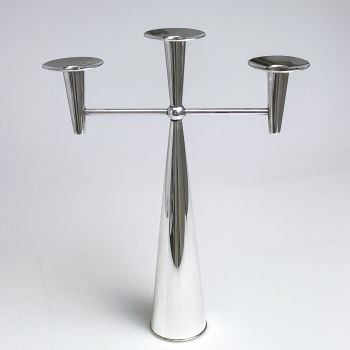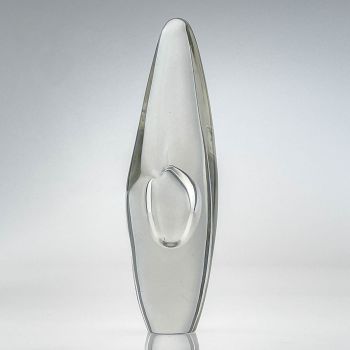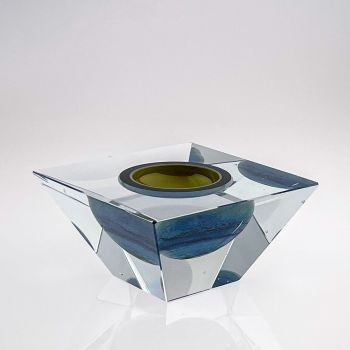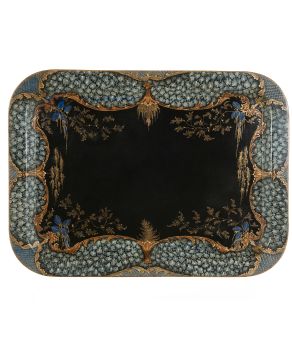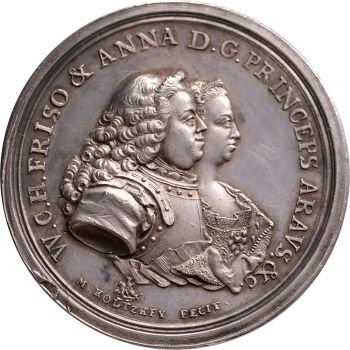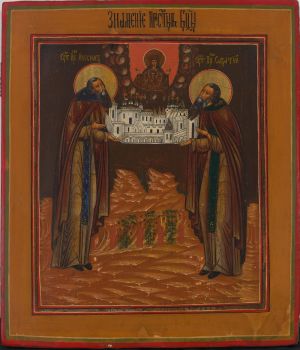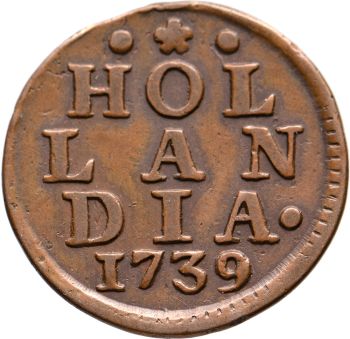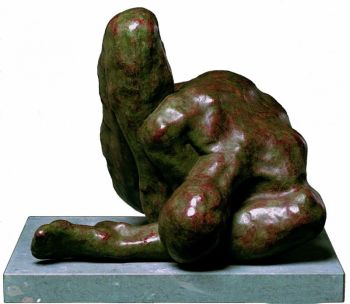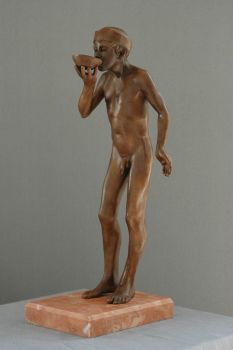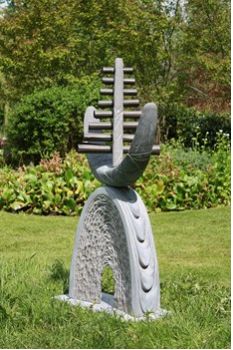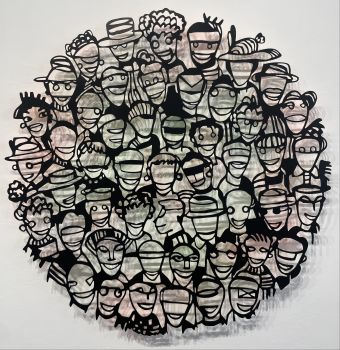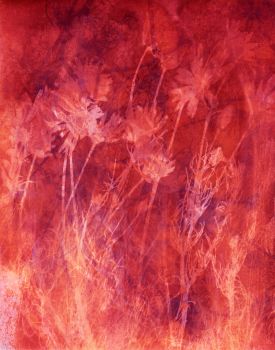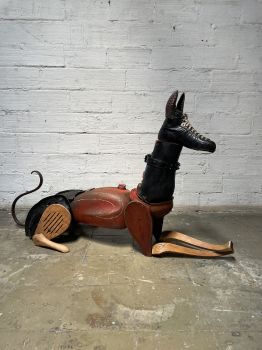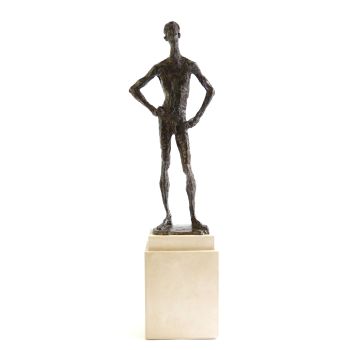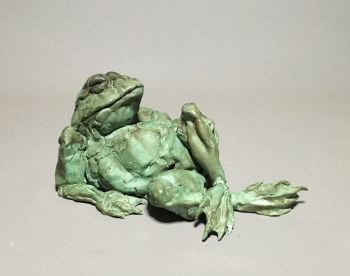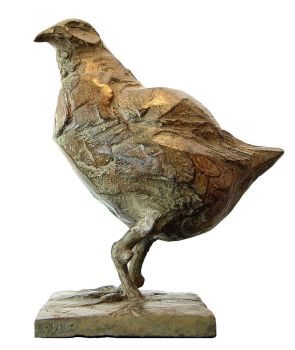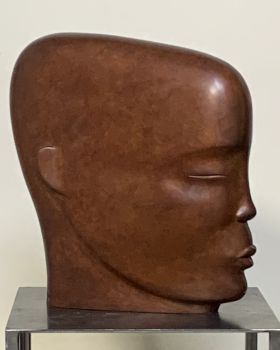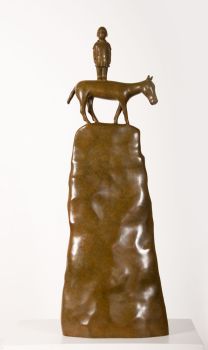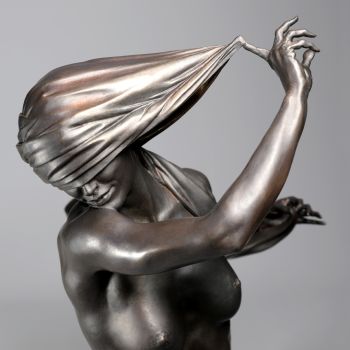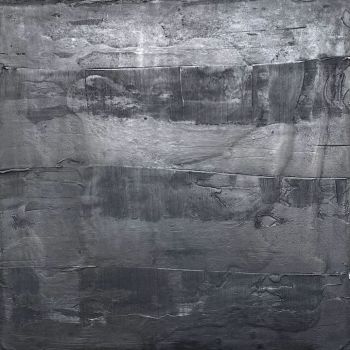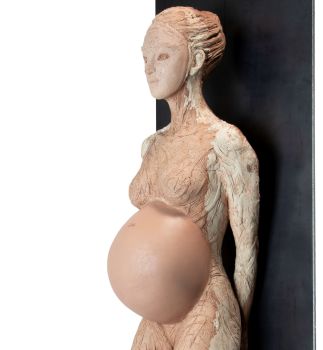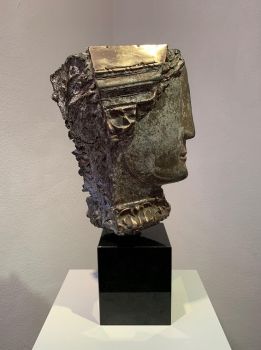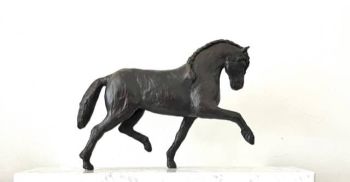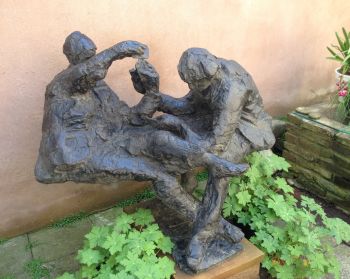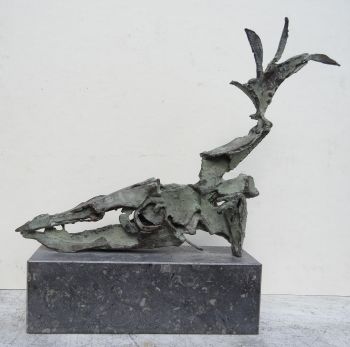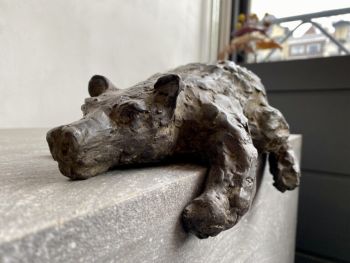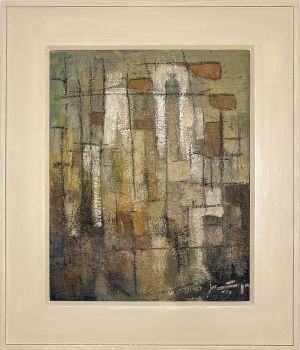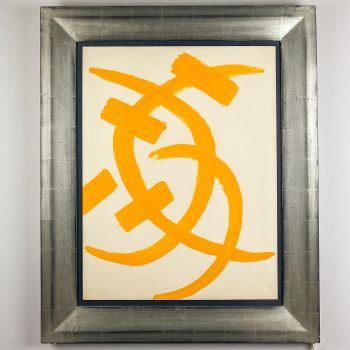A multicoloured enameled copper bowl – 1960’s or 1970’s 1960 - 1979
Saara Hopea
MetallRotes KupferEmaille
4 cm, ø 14 cm
ConditionVery good
€ 575
Van Kerkhoff Art
- Über KunstwerkA multicoloured enameled copper bowl, with spot textured areas. Handmade by Saara Hopea in her own workshop in the 1960’s or 1970’s. The plate is signed on the reverse by the artist in diamondpen: Saara.
Saara Hopea started making these copper enameled plates in 1960 when she lived in New York City. The enameling on copper she learned from her husband Oppi Untracht who taught enameling at the Brooklyn Museum Art school. In a very short time she mastered this craft and in the early 1960’s several of her plates were bought by the Museum of Modern Art. The copper plates Saara Hopea used were hand lathe spun by Abram Bender in New York.
Saara’s enamel work was interupted between 1963 and 1967 when she lived in India and Nepal. When she moved back to Finland she established a new workshop in Porvoo. She kept making these enameled plates by hand until 1980.
About Saara Hopea
Saara Elisabet Hopea (Porvoo 1925 – Porvoo 1984), a prominent Finnish designer renowned for her innovative creations in art-glass, furniture, and jewelry, left an indelible mark on the world of design during her lifetime. Born in 1925 in the scenic town of Porvoo, situated in the southern region of Finland, Hopea’s artistic prowess and unwavering dedication to her craft propelled her to international recognition.
The daughter of Ossian Hopea and Lempi Westerlund, who owned a reputable goldsmithing company, Hopea was exposed to the world of design from an early age. After completing her secondary education, she honed her skills at the Interior Design Department of the Central School of Art and Design, now known as the esteemed Aalto University of Art and Design.
In 1946, Hopea proudly graduated, armed with a wealth of knowledge and a burning passion for design. She embarked on her professional journey as an illustrator before joining the lighting factory of Taito Oy, a renowned establishment under the guidance of celebrated designer Paavo Tynell.
However, it was in the early 1950s that Saara Hopea found her true calling when she delved into the realm of glass design. With an innate talent and an insatiable curiosity, she joined the Nuutajärvi glass factory, where she had the privilege of working alongside the esteemed artistic director, Kaj Franck.
In 1959, tragedy struck as Hopea’s father passed away, and she courageously took the helm of the family business, Ossian Hopea Oy. As the artistic director from 1959 to 1960 and later from 1967, she left an indelible mark on the company’s direction and was responsible for numerous iconic jewelry designs.
Her creative journey took an unexpected turn in 1960 when she married Oppi Untracht, an accomplished American goldsmith, photographer, and writer. Together, they embarked on an adventurous life that led them to reside in New York City, Nepal, and India, before eventually settling in Porvoo in 1967.
Hopea’s exceptional designs earned her widespread acclaim and accolades. Her glass creations were honored with silver medals at the esteemed Milan Triennials in both 1954 and 1957, showcasing her mastery of the craft on an international stage. She also received notable recognition closer to home, including the prestigious Porvoo City Culture Prize in 1981 and the State Arts and Crafts Prize in 1982.
Today, Saara Hopea’s impact resonates globally, with her works showcased in renowned institutions. The British Museum in London boasts an impressive collection of 28 of her pieces, while the Museum of Modern Art (MoMA) in New York proudly displays 11 of her distinctive creations.
Although she left this world in 1984, Hopea’s artistic legacy continues to inspire and captivate design enthusiasts. Her retrospective exhibition at the Museum of Arts and Crafts in Helsinki in 1987 served as a testament to her enduring influence, ensuring her innovative designs remain cherished and celebrated for generations to come.
Marked
Marked in diamondpen underneath the base: Saara
Execution
Made in her own workshop: 1960-1963; 1967-1979
Condition
This plate is in very good vintage condition. No chips, no dents.
Literature
Oppi Untracht – Saara Hopea-Untracht: her life and work. P. 202-213
Dimensions
Height 4,7 cm
Diameter 14,7 cm
Weight 265 grams - Über Künstler
Saara Hopea hatte eine produktive Karriere in verschiedenen Designbereichen und hinterließ einen bedeutenden Eindruck in der finnischen Kunstlandschaft der 1950er Jahre. Ihre Reise begann im Bereich des Möbeldesigns, wo sie von 1946 bis 1948 ihre Fähigkeiten verfeinerte. Auf der Suche nach neuen Möglichkeiten schloss sie sich dann mit der Firma des renommierten Metallschmieds Paavo Tynell zusammen, wo sie bis 1952 arbeitete.
Während dieser Zeit leistete sie einen Beitrag zur Glashütte Nuutajärvi, wo ihre Kreationen zu einer leuchtenden Verkörperung der minimalistischen Ästhetik wurden, die den finnischen Stil in den 1950er Jahren prägte und von den Prinzipien der Bauhaus-Designphilosophie beeinflusst wurde. Insbesondere nach dem Tod ihres Vaters im Jahr 1948 übernahm sie die Aufgabe, Silberwaren für sein Geschäft in Porvoo zu entwerfen.
Ein Wendepunkt in Hopeas Leben ereignete sich, als sie heiratete und mit ihrem Mann nach New York zog. Hier beschritt sie einen neuen künstlerischen Weg und erkundete den Bereich der Emailarbeit. Durch ihre Experimente mit überbrennenden transparenten Emails auf Kupfer erzielte sie bemerkenswerte Ergebnisse, die ihren Stücken ein spontanes und malerisches Aussehen verliehen, das sich durch lebendige Farben und bemerkenswerte Tiefe auszeichnete. Ihre exquisiten Emaille-Kreationen gelangten über exklusive Geschäfte in die Hände anspruchsvoller Kunden.
Der Wissensdurst und die künstlerische Inspiration des Paares veranlassten sie zu einer bemerkenswerten Reise durch Nepal und Indien, die sich über vier Jahre erstreckte. Während dieser Zeit vertieften sie sich in das Studium, die Fotografie und die Sammlung lokaler Metallarbeiten und Schmuckstücke. 1997 veröffentlichte ihr Mann, stark beeinflusst von ihren Erfahrungen, „Traditional Jewelry of India“, ein Zeugnis ihrer Erkundung und Wertschätzung des reichen künstlerischen Erbes der Region. 1967 kehrten sie nach Porvoo zurück, wo Hopeas künstlerische Bemühungen ein breites Spektrum an Disziplinen umfassten, darunter Silberschmiedekunst, Textildesign und Emaillieren.
Die Wirkung von Saara Hopeas Talent und Kunstfertigkeit reicht über die Grenzen Finnlands hinaus. Das British Museum verfügt über eine Sammlung von 28 ihrer Werke, während das Museum of Modern Art 11 wertvolle Stücke besitzt, die von ihrem bleibenden Erbe zeugen. 1988 veröffentlichte ihr Mann einen umfassenden Bericht über ihr Leben und Werk mit dem Titel „Saara Hopea-Untracht: Leben und Werk“, der die bemerkenswerte künstlerische Reise dieser ruhigen skandinavischen Visionärin beleuchtet.
Sind Sie daran interessiert, dieses Kunstwerk zu kaufen?
Artwork details
Related artworks
- 1 - 3 / 3
- 1 - 4 / 24
Unbekannter Künstler
Chinese gilt bronze censer, Xuande mark, 18th century, Qing dynasty18th century
Preis auf AnfrageMenken Works of Art
Unbekannter Künstler
Two Centaurs, France or Italylate 18th
Preis auf AnfrageRobert Schreuder Antiquair
Unbekannter Künstler
Pair of 19th C French Taxidermy Dioramas1860 - 1890
Preis auf AnfrageSpectandum Gallery
1 - 4 / 24- 1 - 4 / 24
- 1 - 4 / 12























